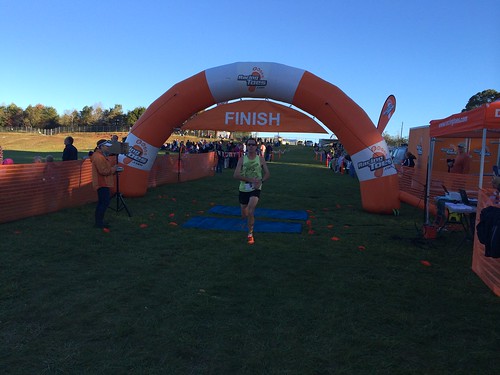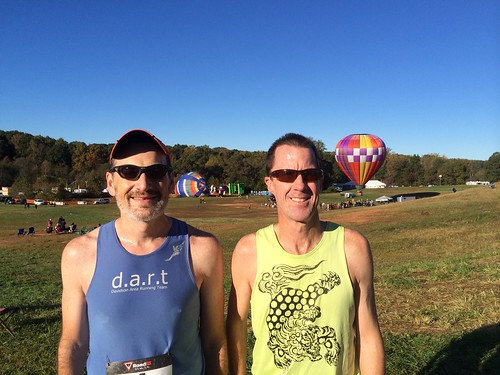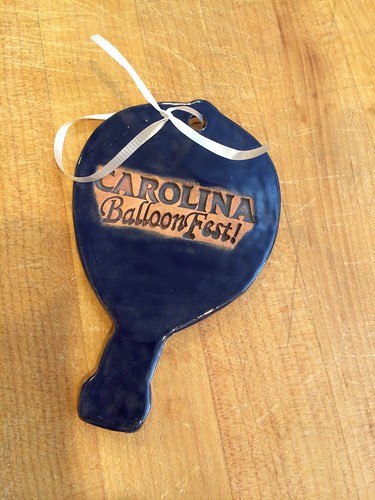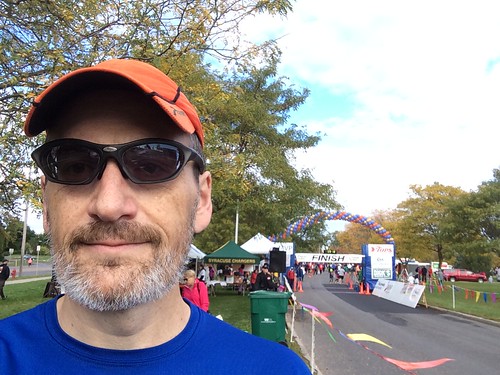"You're a runner, Dave. You should come to Spokane and run in the Bloomsday Race," My mother-in-law said, innocently enough. "You know, it's one of the biggest races in the world! And you can stay with us for free."
So I checked out the
race web site. Yep, it's a big deal -- 50,000 runners converge on Spokane, Washington in early May to run a quirky, hilly 12k race. The only bigger race in the US is the Atlanta Peachtree 10k. Okay, I gotta do this thing.
Then I looked a little closer. Racers line up in the following order: Seeded (elite), Second Seeding, Corporate, and THEN all the other runners. So basically if you don't qualify for Second Seeding or better, you're behind thousands of corporate entries. In other words, if they're not seeded or on a corporate team, faster runners will be doing a lot of bobbing and weaving and not so much race-pace running. To get a
Second Seeding, you need to run a 5K in 18:40, or a 10K in 39:00, sometime in the year before the race. That didn't seem too tough to me -- after all, my 5K PR is nearly a minute faster than the qualifying time.
I picked a race that I thought I could run that fast and
ran it. 18:59. I ran
another one. 18:42. Maybe this wasn't going to be so easy. I ran
another race. 18:48. This was getting ridiculous.
I told myself it was early in my training cycle (this is true, it was), that I just needed some time to build up my endurance. On the other hand, I wasn't getting any younger. Maybe that 17:49 would be the fastest I'd ever run. Maybe after four straight years of improving every year, this was the start of an inevitable decline. But then my friend Bobby Aswell mentioned that he had an extra entry for the Balloonfest 5k. "It's a fun, flat race," he said. "You run under all these hot air balloons!" He assured me that I could easily break 18:40 at this race. Okay, I signed up.
We arrived at the race to a county-fair atmosphere. There were funnel cakes, fried brownies, fried pickles, you name it. And lots of balloons!
 |
| Not your typical 5K! |
The balloons were launching right behind the finish area, and other balloons were drifting in from some other location. Then the race announcer nonchalantly mentioned that the race start time was going to be moved up from 8:30 to 8:15.
"Did you hear that?" I asked Bobby.
"Yeah, I've never heard of such a thing!"
"Well, we better start our warm-up!"
It was about 7:40, and I like to be at the starting area 15 minutes before the start so I can change into my racing flats, use the bathroom, and take care of any other last-minute issues. That meant that we wouldn't have time to run the whole course for a warm-up, because I certainly wasn't going to run it in 20 minutes. We settled for about a mile out-and-back, which gave me a decent lay of the land: A gradual uphill start, a medium-sized descent and climb around a half mile in, a flat second mile, and a downhill finish.
The reason for the early start was to maximize the number of balloons in the air during the run. The balloons had a competition of their own, dropping weights at a target in the "festival" area near the finish line of the race, and apparently balloon competitions always have flexible start times because of the weather.
So we all traipsed up to the starting line 15 minutes early, and I got in a few strides before settling in at the starting line. Just like
last week, Fam was there with his Reckless Running crew, so I knew I'd be racing for a time and maybe an age group award, not for a top-3 finish. The starting gun sounded, and we were off.
This week, I didn't want to leave anything to chance. The last three courses had been long on my Garmin, so I wanted plenty of margin for error. An 18:40 can be had with 6-minute miles, assuming your watch and the course match up perfectly. In practice, they rarely do. So I decided to shoot for 5:50 miles for the first two miles, then allow myself to slow to 5:55 for Mile 3. That would give me a 25-second cushion, much more than I had given myself in the previous three races.
A half-mile in, I was right on pace. There were about 7 runners ahead of me, and Bobby had already settled in behind me. He had run a hard race the day before, so today's race was a bit of a struggle for him. I coasted down the small hill, and hit the climb fairly hard. I was a little behind now, maybe running a 5:53, but that wasn't bad considering the terrain. I kept it up all the way to the Mile 1 marker, where for once my watch was actually perfectly in sync with the course. My split for the mile was 5:57. So much for giving myself a cushion.
The course seemed to flatten out for Mile 2, and I just focused on a steady, solid stride. I passed another couple of runners and felt like I was doing well. Yes, breathing was a bit of a struggle, but nothing unexpected for this point in the race. Then I looked at my watch. My pace was 6:17. I wasn't even halfway through Mile 2 and I was running a 6:17. I couldn't believe it. If I can only run a 6:17 on flat terrain, how could I possibly run the rest of the race at a sub-6-minute pace? I was ready to give up.
Fortunately, at almost that exact moment, the course headed downhill toward the turnaround. I cruised down the hill, cheered Fam on as he strode confidently up the hill, then tried to maintain momentum on the 180-degree turnaround. Halfway up the hill, I looked at my watch again. Somehow, amazingly, my pace for Mile 2 was back around 6 flat. Maybe I could do this. I crested the hill and headed down. Yes, downhill. The reason I had been struggling so much at the start of Mile 2 is that I was actually climbing! Now I could cruise to the end of the mile on a gradual downslope. Once again, I reached the mile marker just as my Garmin beeped. My split for Mile 2 was 5:58.
1.1 miles left, mostly downhill. Maybe I could do this after all. I allowed myself to look at my watch at around 2.3 miles: 5:51 pace. Maybe I could actually negative-split this race! I headed through a parking lot, then briefly onto a taxiway before heading onto the long, final straightway, a wide taxiway between several large hangars. This was a nice, gradual downhill, all the way past the starting line, where we would then turn on to a steep grass slope and the finish line.
I just tried to let the hill help me along as I cruised forward. I was steady at 5:51 every time I looked at my watch. I was turning onto the grass and I couldn't look at my watch any more. Someone was telling the runners to "be careful." It was a fairly steep, bumpy downhill slope to the finish. I couldn't see the finish line clock until I was nearly there, and then it read....18:17, 18:18, 18:19, and I was finished!
Finally! I had done it, after four weeks of coming oh-so-close. I looked down at my Garmin, which I had somehow managed to stop as I crossed the line. It had measured the course at 3.11 miles, a nearly perfect 5k, or just a touch longer. This was a legitimate 18:19. I had done it. It wasn't a PR, or even very close to my PR, but I had finally hit the goal I had been striving for for weeks. Bloomsday, here I come!
Bobby crossed the line about 40 seconds later:
 |
| Looking good! |
We cooled down with the Reckless Running crew, chatting about race strategy and how cool it was to run with all these balloons. As we arrived back at the finish area, a couple more balloons were taking off, so Bobby and I took the opportunity to get a photo:
 |
| Great setting for a race! |
Bobby and I each won our age groups and got nifty balloon Christmas ornaments as prizes:
 |
| Not bad! |
I managed to stay away from the deep-fried brownies, but did buy myself a couple chocolate-chip cookies to celebrate finally reaching my goal. No, it wasn't a PR or a win, but it was almost as satisfying to hit a goal I'd been trying to reach for several weeks. Hopefully as the season progresses, I'll be able to whittle some more time off my 5K, or even PR, but for now, I'm going to celebrate this little accomplishment. Mmmm, chocolate!
Details of my race are below:




























